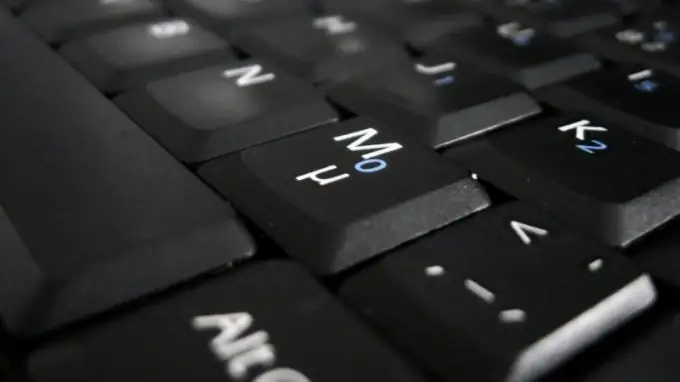Special key combinations, or "hot keys", can significantly improve the efficiency of your computer. This function becomes especially convenient when working on a laptop, since these mobile devices do not have a full keyboard.

Instructions
Step 1
The standard laptop keyboard usually does not have a block with numbers. Many of the functions of a full-fledged keyboard are performed using function key combinations called "hot" keys. There is a dedicated Fn button to enable and disable this technology.
Step 2
The shortcuts of some keys with the Fn button differ depending on the brand of laptop, but the most common are: - Fn + F1 - to call help; - Fn + F2 - to send a document to print; - Fn + F3 - to launch a browser; - Fn + F4 - to enable or disable the touchpad; - Fn + F5 - to enter sleep mode; - Fn + F6 - to lock the keyboard; - Fn + F7 - to decrease the screen brightness; - Fn + F8 - to increase the screen brightness; - Fn + F9 - to mute the sound; - Fn + F11 - to decrease the volume; - Fn + F12 - to increase the volume.
Step 3
Hot keys are also used in desktop computers. Pay attention to the possibility of assigning custom "hot keys" to shortcuts located in the main system menu, or to desktop icons. To do this, call the context menu of the selected shortcut by clicking the right mouse button and select the "Properties" item. Use the "Shortcut" tab of the dialog box that opens and select the "Shortcut" line. Press the desired function keys and save your changes. Usually the combinations Ctrl, Shift and any letter or Ctrl, alt="Image" and any letter are used for this.
Step 4
Use the most well-known desktop keyboard shortcuts: - Ctrl + Esc + Win - to open the main Start menu; - Ctrl + Shift + Esc - to launch the Task Manager utility; - Win + E - to launch the Windows Explorer application; - Win + R - to call the Run dialog; - Win + M - to minimize all open windows of the desktop.






